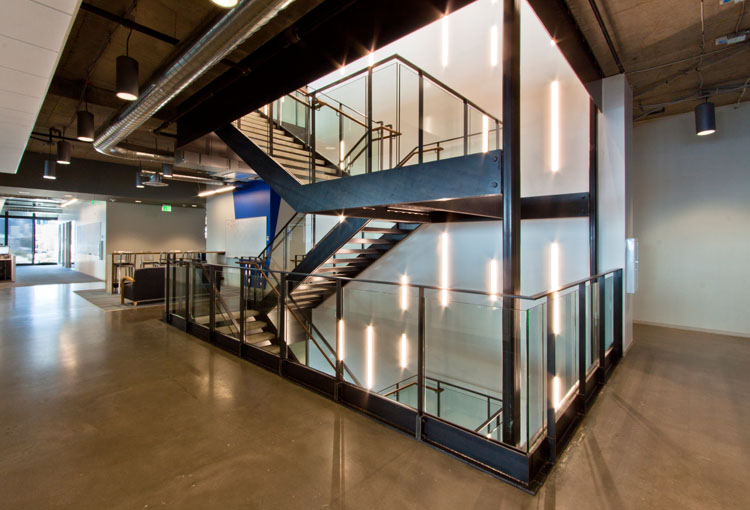Jim Allegro, a principal at FOX Architects, attended WORKTECH 13 in San Francisco on November 7. Here are some of his observations.
Blurred lines
“The influence of the millennial generation on the evolving workforce was a huge driver of the day,” said Allegro. “This generation sees their own personal success as enhanced by the success of others.”
Ergo: the collaborative workplace. He pointed out that – although it sounds nice – this dedication to collaboration doesn’t spring from purely altruistic motives: it’s also smart business.
“The best ideas come from collaboration,” said Allegro. “Ideation is accelerated through a creative group process where the collective goal is to help each other produce the best possible ideas and products.”
The ideas set forth by Chris Hacker – Herman Miller’s Creative Director of Global Work – align with this. According to Allegro, Hacker discussed how “we’ve evolved from an era of industry, to an era of information, to an era of ideas. It’s a much more democratized environment, and not as hierarchical. There’s a crosspollination of ideas across generations. The value of work is different than it used to be, and the lines between work, home, and play are much more blurred.”
“The quick and the dead”
Gerry Taylor, Creative Director of Orangebox, emphasized the importance of anticipating where the workplace is going.
According to Allegro, “He said, ‘In the future there will be two types of companies: the quick, and the dead.’ He talked about how if we resist change, it will consume us. We must adapt or die. In terms of the workplace, you don’t move to where the ball is, you move to where the ball is going to be.”
Sort of like soccer.
What can design schools teach us about the workplace?
Scott Doorley and Scott Witthoft of Stanford’s d.school have conducted case studies to categorize the ways their students work. Allegro summarized the following four ideas that can be easily applied in the workplace.
1. Orientation. How you configure a room will have a huge impact on how interactive vs. how not interactive a group may be. How we are situated in space, and how we look at others, can be a big influencer on the creative process.
2. Posture. Doorley and Witthoft put a group of students at barstool height instead of at chair height, which allowed them to be at eye level with the professor. This also meant that students could push chairs back and stand up to talk or make a point in an informal, non-threatening way.
Alternately, in their “sandbox” experiment, students sat on the floor. This facilitated relaxed and intimate discussions among students who were already well-acquainted, though it was much less comfortable for students who didn’t know each other.
3. Surface. The types of surfaces you put into spaces will affect attitudes toward work. In a workspace with beautiful marble and wood, people may feel too intimidated to “roll up their sleeves” and be freely creative. On the other hand, a room outfitted with non-precious materials and raw surfaces – think of an old, well-loved art table – feels much more liberating.
4. Ambience. Think about your environment in terms of sound, sight, and smell. Doorley and Witthoft related the story of an overseas meeting with high level government officials in a very traditional, formal environment. They felt that the space might limit the exchange, so they opened up windows, turned on music in the background, and that, combined with the city outside the windows really helped to foster better discussion.
“They’re important, impactful ideas,” said Allegro of the d.school case studies – things we think you can experiment with today, with little effort, in your own office.
Ultimately, Allegro said that the conference was thought provoking, energizing, and fun.
“There was such a positive energy: forward thinking people, some of the best and brightest with regard to the workplace,” said Allegro. “You bump into people from all over the world, who are there with a common purpose to drive the workplace of the future.”


